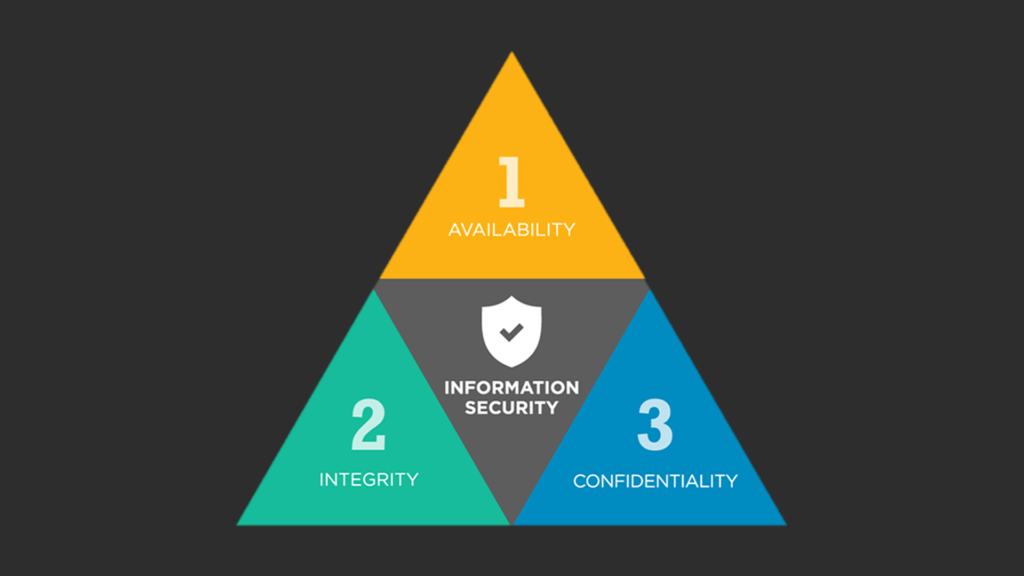Cybersecurity Risks That Could Wreck Your Online Business
The web is one big war zone. You’ve got hackers, scammers, and cybercriminals on the prowl, just waiting for you to slip up so they can exploit you. And boy, are they going to try hard. Being an online business owner makes you a prime target. Your apps, websites and databases? They’re like gold mines ready to be plundered if you’re not careful.
The numbers alone should scare you into action; 82% of breaches involved human error, according to Verizon’s 2022 Data Breach Investigations Report – whether that means an employee fell for a phishing scam or had a password like ‘password123’. Meanwhile, Cybint reckons cybercrime costs over $6 trillion annually worldwide already …and counting.
So why don’t more businesses take their security seriously enough? Perhaps it’s because they think they’re too small fry in this pond full of sharks; maybe even further along towards denial with an “it won’t happen here” mindset? Unfortunately, whatever their excuse may be – pretending these dangers don’t exist won’t make them go away any time soon. Cybersecurity needs to become part and parcel with how things are done around online operations nowadays – not something tacked on after everything else.
Table of Contents
The Sinister World of Cyber Threats

To understand how urgent cybersecurity is, one must know about the many risks that hide behind the internet. The following are some of the most wicked enemies you might have to deal with:
- Malware Madness: Malware, short for malicious software, acts as a digital virus to damage systems. These sneaky programs can hinder operations and expose sensitive data from ransomware that encrypts information until a fee is paid to spyware designed to monitor activities invisibly.
- Phishing Sharks: You’ve likely seen these scams – well-crafted emails or websites that appear legitimate and trick users into giving up login credentials or other personal information. If just one employee falls victim to such an attack, it could lead to hackers through your whole network.
- Distributed Denial Dangers: DDoS (Distributed Denial of Service) attacks work like an overwhelming traffic jam for networks by flooding them with false requests. Hence, they become inaccessible to real customers or users. In the case of an e-commerce site or web app, this translates into thousands being lost every minute.
- Identity Theft: Digital identities are essential for any business, whether email accounts, social media profiles or website domains. Once seized by online criminals, they can be used maliciously, spreading viruses, defrauding clients, and damaging brand reputation.
There are many more examples, but these few glimpse just how vast and ever-changing the cyber threat landscape is. Hackers continuously develop new attack vectors as they race against each other to exploit fresh vulnerabilities; therefore, staying vigilant remains paramount.
Why Online Businesses Are Such Juicy Targets
What are some of the reasons that online businesses are attacked so frequently by cyber criminals? Here are a couple of them:
- Data is the New Currency: In any internet-based company, customer information is everything, including financial records, proprietary data, etc. This stockpile of private information has immense worth on the dark web; hence, it attracts the highest bids from buyers who’ve no regard for ethics.
- Everything is connected: Your business operations probably depend on a complicated network of systems and third-party services like websites, apps, cloud platforms or payment gateways, among others. Each integration point allows hackers to find their way in unnoticed.
- Trust is hard-won (and easily lost): Trust forms the foundation for any thriving brand in cyberspace. Any significant security breach could undermine many years of credibility built with customers within seconds. Recovering from this kind of setback might prove more difficult than climbing Mt Everest!
- Too many threats, not enough resources: Smaller digital enterprises often feel overwhelmed when they think about implementing solid cybersecurity measures because they may require lots of time, money, and expertise, which they lack. Hackers have all these at their disposal and can keep searching tirelessly for weak links.
With such valuable data being at stake alongside complex interconnections between various systems plus limited security resources sometimes available, it's not surprising that e-commerce sites make fertile grounds for different types of cyber attacks to flourish.
Building Your Digital Fortress

Setting up and forgetting about protecting your online business against cyber threats is virtually impossible. A comprehensive strategy must be adopted, which involves initiating various measures. Here are the necessary cybersecurity steps to follow:
- Start With the Human Firewall: It does not matter how advanced your security technology may be; always remember that employees are the first defence line. Therefore, it is crucial to conduct regular cybersecurity awareness training so that they can know how to recognise and respond to phishing attempts and use strong passwords while maintaining a healthy level of scepticism towards anything suspicious.
- Adopt Multi-Factor Authentication: Nowadays, using usernames and passwords is no longer safe enough. Account security should be enhanced with multi-factor authentication (MFA), which demands something extra like a fingerprint or temporary code. Ensure that MFA is made compulsory for all business systems and services.
- Secure Data Through Encryption: Data encryption entails converting information into an unreadable form to remain protected even if intercepted by unauthorised persons. Therefore, end-to-end encryption should be implemented for every communication channel, database or stored file containing sensitive data.
- Always Keep Software Updated: Hackers capitalise on out-of-date programs because they have unpatched weaknesses through which they can gain access quickly. As such, establish mechanisms for ensuring that all software, systems and firmware receive timely security patches and updates.
- Control Your Digital Boundary: To oversee inbound/outbound traffic effectively, install solid firewall intrusion detection systems (IDS), among other controls, at your organisation’s perimeter. Additionally, segment networks should be used to restrict lateral movement once there has been a breach elsewhere within them.
- Co-operate With Professionals: Smaller enterprises may find partnering with cyber-security specialists cost-effective. Managed security service providers (MSSPs) offer round-the-clock monitoring, threat intelligence sharing, incident management planning, and customised strategic advice that suits individual requirements.
Cybersecurity Risks: Tips for Lean Teams
Implementing an all-encompassing cybersecurity strategy may seem costly, particularly for small online businesses. Nevertheless, there are affordable ways to safeguard your digital assets without breaking the bank. You can significantly reduce your exposure to risk with a few tricks up your sleeves, such as:
- Utilising low-cost tools: Several capable security tools fit within tight budgets – from free/open source firewalls and antivirus software to affordable cloud security services. They may lack some features in premium enterprise solutions, but they can create a strong defence foundation when used smartly together.
- Automating whatever is possible: Since human error is one of the most significant risk factors, why not cut it down through automation? For instance, automatically updating software programs, using password manager tools to change passwords frequently and enabling multi-factor authentication wherever practicable will enhance your security posture.
- Starting with basics first: Rather than going for expensive gimmicks, patching vulnerabilities, implementing access controls, securing communications and carrying out regular risk assessments should be top priorities for lean teams. Before considering sophisticated safeguards, ensure you have covered these fundamentals.
- Cultivating a culture conscious of safety: Even with a small team, having cyber awareness is invaluable yet costs nothing beyond continuous training coupled with enforcement. Create an environment where everyone feels accountable for safety rather than treating it as IT’s job alone.
- Understanding outsourcing: As the business expands, so does its need for protection, which becomes more intricate by the day; at this point, one might require managed security services from seasoned providers. Be wise while budgeting for this future stage of growth.
Remember that there isn’t any perfect or one-size-fits-all cybersecurity solution, especially when working on a shoestring budget. Simply think about resilient and risk-based digital defences, which can be achieved strategically by layering affordable tools.
The Cybersecurity Mindset: Vigilance as a Lifestyle

By now, the necessity of solid cybersecurity should be glaringly obvious. However, safeguarding your online business is not simply about putting the right technologies and response plans in place – it’s an eternal attitude of watchfulness that you must foster.
Think about it as driving defensively. You don’t just obey traffic regulations; you scan actively for possible dangers, keep a safe distance from other vehicles and stay prepared to react to anything unexpected. The same kind of proactive thinking and awareness applies to the cyber world.
Take a “Threat-First” Perspective: Instead of chasing after the most recent threats and vulnerabilities reactively, intelligent businesses take a “threat-first” approach. Envisage different breach scenarios across your digital landscape and analyse their potential impacts. Then, safeguards and monitoring capabilities will be implemented to help detect and mitigate such threats before they materialise.
Build Security into DevOps Processes: For online businesses creating websites, apps or services, embedding security throughout the DevOps lifecycle is mandatory. Starting with security during the initial design and testing stages rather than treating it as an add-on later on significantly reduces weaknesses.
Encourage Cross-Team Security Collaboration: Cybersecurity should no longer exist within silos within the IT department; it must become cross-functional, involving all teams with transparency as well as cooperation among them – from the development & operations team up to the marketing team, finance team, and even C-suite executives should also be included. Openness in communication helps deal with issues quickly.
Keep Up-to-date With Changing Cyber Threats: The landscape of cyber threats never stops changing; new attack vectors emerge every time. Protecting your online business demands continuous learning – subscribe to reliable cybersecurity blogs or newsletters, join relevant online forums, attend industry conferences, etcetera, lest what you know becomes outdated.
In conclusion, strong cybersecurity involves being proactive at all organisational levels and having a suspicious mindset. Always assume that you could be breached and respond with strict monitoring and protective measures; this is the only way to stay ahead in an ongoing cyber security arms race.
Conclusion
Look, I’m not here to scare the living daylights out of you – that’s the last thing any business needs right now. But at the same time, I would be doing you a disservice if I didn’t tell you straight and share some cold, hard truths about cybersecurity risks in this digital age.
To hackers and online criminals, your business is a bullseye of money-making data and essential assets that can be quickly taken advantage of. They’re everywhere and never stop coming; these are constantly changing, too, so one minute it could be ransomware, then the next minute it’s credential theft or even system hijackings, which could bring everything crashing down within minutes!
It may sound scary, but don’t let fear paralyse you! We can do several things as owners or employees who work for such companies ourselves; one is having more than just one line defence against them, like fostering a security awareness culture among staff members while implementing strong deterrent controls, plus establishing an incident response plan.
Can this get expensive? Yes, because when it comes down to business survival, nobody should gamble with cybersecurity, but that doesn’t mean there aren’t cost-effective tools available for use by small budgets with few people involved… Provided they’re used correctly, such measures greatly reduce exposure levels significantly.
At the end of it all, though – sadly – there will never be a winner in this game called “cybersecurity” since each passing second brings new threats into light, but what helps us stay ahead is having an undying spirit filled with readiness throughout every part of our internet activities. So, keep being proactive rather than reactive, which means staying informed on current cybercrime trends and continuously acquiring knowledge about how best to protect yourself from falling victim too often…
Are you feeling overwhelmed by strengthening your defences? That’s only natural, given that safeguarding against cybersecurity risks ranks among any online entrepreneur's top priorities. Remember, though, it’s always better to be safe than sorry, so adopt a strong position vis-à-vis safety measures while staying alert, too, lest fate plays dice with everything you hold dear, including customer trust.
FAQs
What are the most significant cyber threats in online business?
Some of the most important include malware attacks, phishing scams, DDoS (distributed denial of service) attacks, hijackings and data breaches that expose customers’ private details or financial information.
How can a small company protect itself online if it has limited funds?
Use cheap or free security tools such as firewalls and antivirus software. Patch vulnerabilities promptly and staff essential controls over access rights. Automate those error-prone processes with managed security services to be considered in future as needs dictate.
What is the most significant cybersecurity risk factor that businesses usually ignore?
In many cases, it’s your employees. Regularly providing security awareness training to teach them how to recognise things like phishing emails and use strong passwords should, therefore, never be skipped.
What exactly is multi-factor authentication (MFA), and why should I care?
Beyond just logging in with a username/password pair alone, MFA adds an extra step where users must present evidence that they’re who they claim to be before being allowed back into their accounts or other systems again. This helps stop attackers from using compromised login credentials against you.
Why do I need an incident response plan?
An incident response plan is a document that lays out what steps will be taken by whom and when following any successful cyber attack or data breach. Preparing one in advance could save hours – even days – of critical time when under attack, which is vital to the damage limitation strategy.
How can I make my online business “security-first”?
Create an environment where everyone talks openly about safety at work across all teams from top management down; this includes consistent training and enforcement for each employee regardless of their role within an organisation.
What laws apply to securing my website?
Depending on the industry and how customer data is handled, you may need to adhere to various legal requirements relating to information protection, e.g., GDPR, CCPA HIPAA, PCI DSS, etc. Seek advice from a lawyer about compliance if uncertain.
How often should I do security risk assessments?
For most businesses operating online, at least once per year is a good practice for identifying new cyber threat vectors and evaluating the effectiveness of current controls.
My systems got hacked; now what?
Follow the incident response plan. Contain, investigate causes, and restore services in phases while preserving evidence securely before engaging with legal authorities if required.
What types of emerging threats should I know about?
Deepfakes, AI-powered phishing scams, crypto-jacking malware attacks on IoT devices, sophisticated social engineering, etc., the list goes on. Stay vigilant by staying current with the changing risk landscape through regular updates from trusted sources like CERTs or ISACs.
Does cyber insurance make sense for my small company?
If you can afford it, then yes, security coverage may help offset costs associated with recovery (e.g., forensics investigations), lawsuits arising out of data breaches suffered, and the potential loss of business income due to prolonged downtime following successful attacks against critical infrastructure assets so weigh these against specific risks faced.
How can I secure my website better?
Test all code thoroughly, vetting vulnerabilities; keep software frameworks up-to-date; implement SSL encryption web application firewalls file upload restrictions, among other things that fall under best practices.
